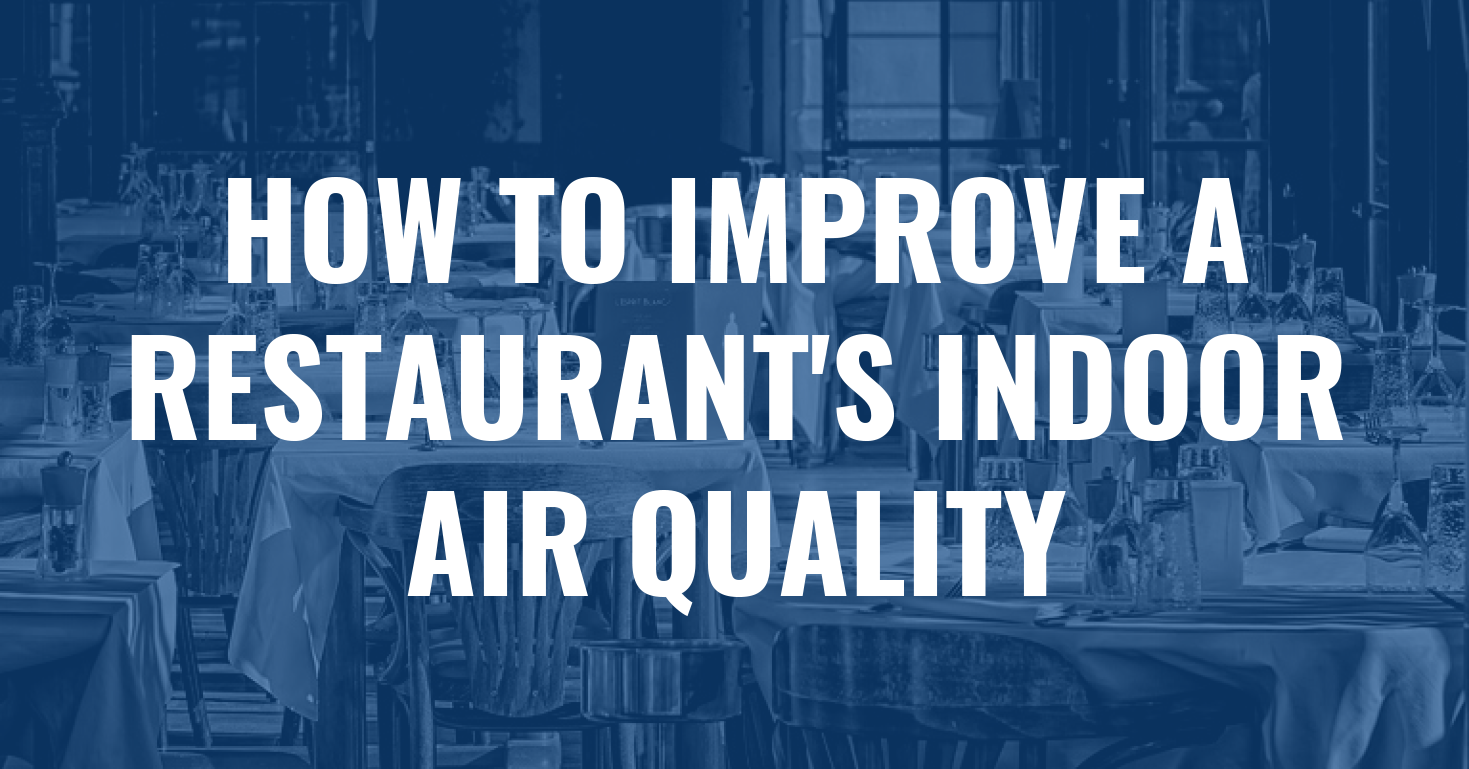How to improve a restaurant’s indoor air quality

As COVID-19 restrictions lift and restaurants begin to open for indoor dining, many customers remain hesitant to dine in. The Center for Disease Control and Prevention believes that the virus is transmitted by respiratory droplets when an infected person talks, coughs, or breathes, so diners nearby may be at risk of inhaling the droplets and catching the virus.
Restaurants have focused on curbing the spread of COVID-19 by sanitizing high-touch surfaces, adding barriers between tables, creating outdoor seating, wearing masks, and reducing indoor seating capacity. However, convincing customers to dine indoors continues to remain a challenge.
Some restaurants are now looking to increase their level of safety protocols by improving indoor air quality. Fortunately, there are several applications that are compatible with pre-existing systems, so it is possible that little or no alterations need to be made to the currently installed equipment.
Filters and Air Purifiers
An effective and cost-efficient option to improve indoor air quality is to install a filter with a higher MERV rating. Filters with high MERV ratings are deeply pleated allowing them to capture more airborne particulates than standard filters. The downside to MERV filters with high ratings is that they can restrict airflow and slow down air circulation stressing the air handler.
As a multilayered approach to indoor air quality, adding an electronic air purifier to each existing unit is another option. Air purifiers are designed to sanitize the air and reduce particulates, odors, and bacteria circulating in the conditioned space.
Better Ventilation
Proper ventilation of a restaurant’s HVAC equipment is another factor in maintaining healthy indoor air quality. Most restaurants already have a high air change rate to manage cooking odors, but there may still need to be modifications made to improve the air quality in dining areas.
The cost to improve the ventilation in a restaurant all depends on the current HVAC equipment. For example, if the units have economizers, adjustments can be made to the devices. However, investing in an energy recovery system may be a more cost-effective option in the long run.
UV-C Light Solutions
Germicidal UV lights are a medical-grade air disinfection technology that has effectively been used to reduce the spread of bacteria. When a virus is directly exposed to UV-C light, the outer protein coating of the virus is destroyed, inactivating it.
UV technology can be installed in most restaurant air handling equipment. For upper room fixtures, the ceiling must be at least 8 feet high and free of obstructions (TVs, signs, etc.).
From a cost perspective, UV lights are an affordable option and a great addition to an indoor air quality improvement strategy.
Studies on the effectiveness of UV-C lamps inactivating the COVID-19 virus are still ongoing. However, UV-C light has already demonstrated the ability to destroy the protein coating of the SARS-Coronavirus, a different, yet related virus to COVID-19.
Preventative maintenance
As always, preventative maintenance on all equipment is necessary to maintain optimal indoor air quality. Regular maintenance may also prevent utility overpayment, avert system failures, and can help extend the life of HVAC systems.
contact a professional
No matter what indoor air quality solution your restaurant chooses to implement, it is critical to seek professional help. While many of these technologies may seem simple to install, DIY solutions often cost restaurant owners more money in the long run and result in higher utility bills.
If you are interested in learning how you can implement these indoor air quality technologies to bring back indoor dining to your restaurant and provide a safer environment for your customers and employees contact Burkholder’s HVAC today!
